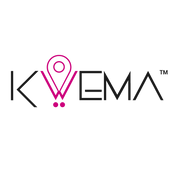Employers lose 1.4 million a day in productivity, revenue and costs associated with gun violence. Whereas American taxpayers pay an average of $34.9 million a day for ambulances, police, first responders and medical care services related to gun violence. This issue is one to be worried about, therefore this blog aims to provide 3 steps to take action on gun violence prevention at healthcare facilities and 3 basic strategies all organizations should be looking at.
Broad Engagement, Access, impact, mental health, Prevention, public safety

Broad Engagement, Access, impact, mental health, Prevention, public safety
1. Start a dialogue on these important matters
Your voice will be stronger when it comes as a group. Whether you are an employee or an employer you can identify those who may be interested in these matters as well.
As an employee you can reach out to co-workers through employee portals, company newsletter, corporate chats, social media or talking to them in person. Joining forces to communicate your needs is important and powerful.
As an employer you can start asking questions to your workers. Start researching your employees' concerns, interests and satisfaction levels so that you know how they are feeling and what you can do to improve.
2. Identify stakeholders: who you can talk to
As an employee, think about who the stakeholders are. Is it the plan administrator, the manager or coordinator? Depending on your facility´s structure, you can identify the hierarchy to follow. In smaller organizations CFO or CEO may be approached directly, and in bigger-size corporations you can identify the most influential person. Once you have identified them, think about which is the best way to approach them. You can also research if your organization has connections to other organizations or foundations related to gun violence prevention.
As an employer, think about the best way to approach your staff. Talk to them directly so you know how they feel and what their needs are, then make sure a formal communication is established so that they can be certain your organization is actually listening to them. You can do this through an official communication, your organization's newsletter, employee portals, etc.
Broad Engagement, Access, impact, mental health, Prevention, public safety

Broad Engagement, Access, impact, mental health, Prevention, public safety
3. Collaborate to bring up awareness and possible solutions
At this point you may be standing at one of these 3 scenarios:
- Employees are concerned about gun violence and want to approach administrators.
- Employers are concerned about gun violence and want to take corporate action.
- Both employees and employers are concerned about gun violence and want to come up with solutions.
In any scenario, gun violence is a problem that concerns both workers and managers, which is why establishing communication lines to address these concerns is the most important part and where teamwork is crucial.
The solutions you may come up with may change depending on your organization needs, size, workers, etc. But here are 3 strategies that should be considered in every healthcare facility:
- Check your state's laws. This link provides more information about the different legislations regarding this topic.
- Alert someone when you notice a threat. Never hesitate to reach your manager or security staff. And as an employer, always listen to your employees.
- Participate in training exercises. As an employer make sure to provide proper training and tools that help staff respond effectively to these emergencies.
Broad Engagement, Access, impact, mental health, Prevention, public safety
The Kwema Smart Badge™ allows employees to alert security staff by pressing a button for three seconds when in danger. It can also be used to automate roll calls in case of active shooter and other security incidents that require mass evacuations. Our technology is designed to avoid training costs as it can be easily implemented into healthcare centers and accessories workers already wear.
